Intel Demonstrates Moorestown Smartphones and Tablet Running Moblin, Including LG
by Anand Lal Shimpi on January 7, 2010 5:30 PM EST- Posted in
- Trade Shows
Moorestown is Intel's Atom based SoC that's designed for smartphones. The chip will be out in Q2 2010, with phones and devices available in the second half of 2010. Today Intel showed us three devices based on Moorestown, two phones and one tablet.
All three platforms are running Moblin 2.1 and all were very quick. I'd say faster than anything ARM based I've seen thus far. I asked Intel about how Moorestown will compare to a SoC with dual ARM Cortex A9 processors. Intel was very firm in its response saying that it expects to deliver better performance on both single and multi-threaded code at smartphone power levels than an SoC with two Cortex A9 cores. It'll be a while before we can confirm for ourselves, but it's a bold statement from Intel.
The first device was an OpenPeak tablet:
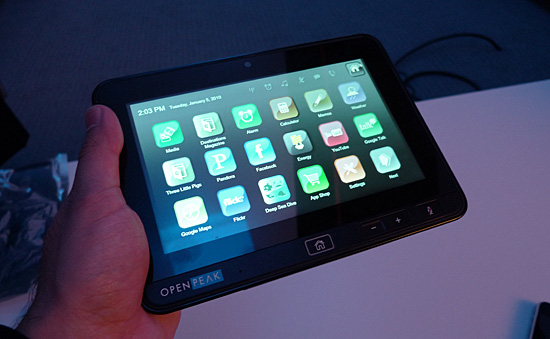
The Moorestown silicon went into this tablet two weeks ago, so not all applications were functional. Those that worked, seemed to work well. The OS lacks the left/right swipe functionality of an iPhone. You need to use previous/next buttons to navigate the home screen.
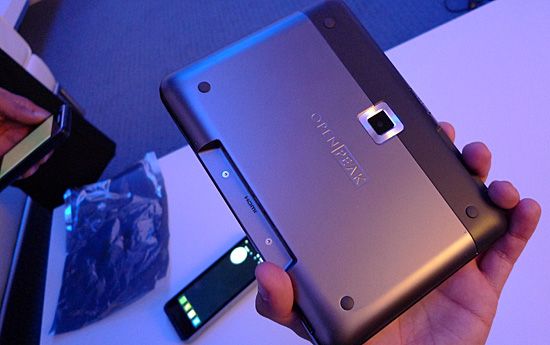
The UI looks very clean and the tablet itself was a decent form factor. I wouldn't say that it's perfect, but clearly a step in the right direction. The platform never felt slow in my limited time with it.
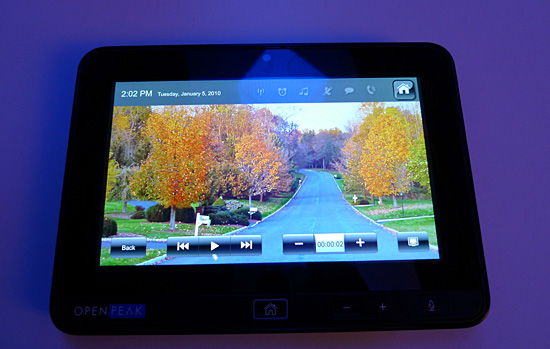
Next up we have an LG smartphone based on Moorestown with Moblin 2.1. It's a bit longer, thicker and heavier than an iPhone:
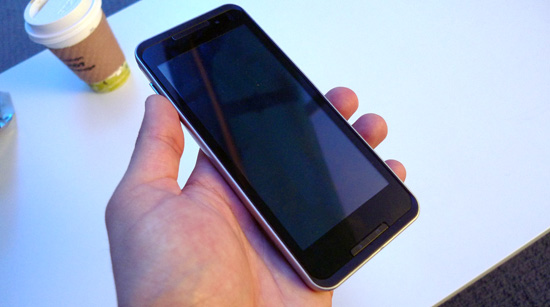
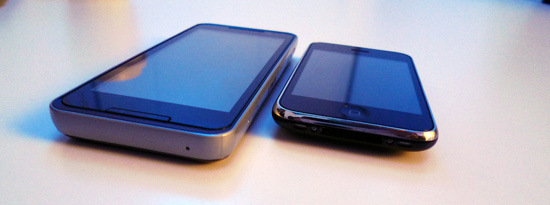
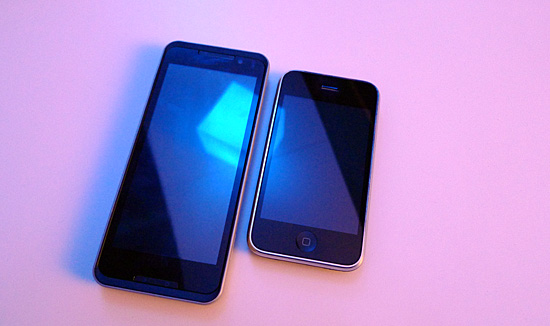
Apps launched quickly and multitasking is obviously supported but I'd say that overall the interface isn't all that clean or intuitive. Ultimately what I'm interested in is Moorestown itself. LG is a start, but hopefully we'll see more devices that implement it better.
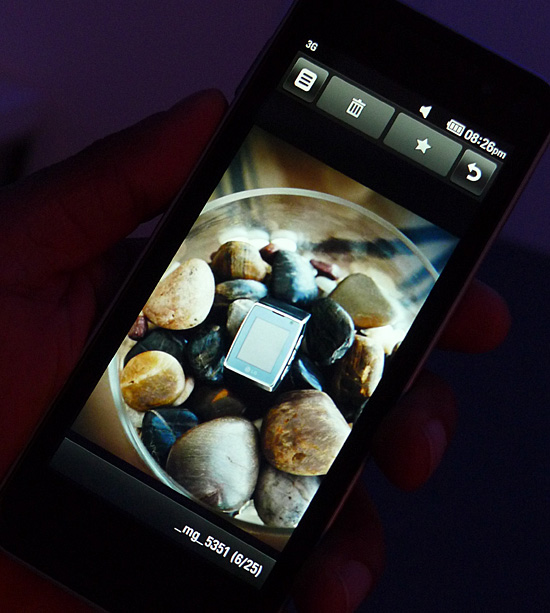
![]()
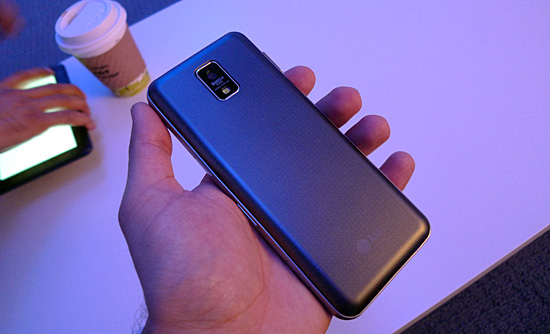
Finally we have a smartphone that is actually iPhone sized. It's made by Aava and is a bit thicker, but lighter than an iPhone 3GS:
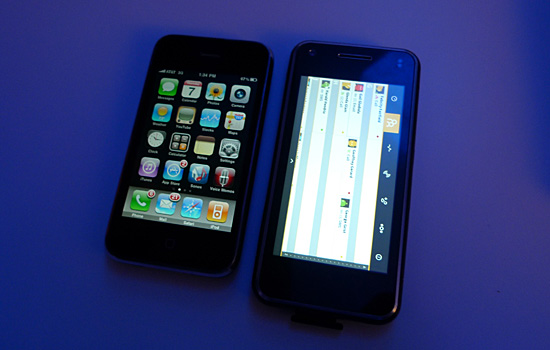
The UI on this phone is more like the traditional Moblin UI.

This is a huge step forward to see working devices that can make phone calls based on Moorestown. Cortex A9 vs. Moorestown this year? I'm excited.










31 Comments
View All Comments
WilcoD - Friday, January 8, 2010 - link
Actually an in-order Atom is slower per MHz than the out-of-order Cortex-A9 and uses far more power as well. A dual core Cortex-A9 can run at 2GHz and still use less power than a single 1.6GHz Atom, so an ARM CPU kills Atom by a big margin on both performance and battery life.It doesn't look like this will change any time soon. And given none of these devices run Windows, why use x86 at all?
Fox5 - Friday, January 8, 2010 - link
From the few benchmarks I've seen, general purpose compute power of Atom is about equal per mhz to that of an A8. It will probably be inferior to the A9.However, Atom has monster FP performance with SSE that is well beyond that of the A8 or A9 per mhz (but probably hobbled by x86's limited register set, Intel refusing to allow atom to run in 64 bit and get 8 more registers, and the lack of software optimized specifically for Atom). But I can't think of much else devices like these would use powerful FP performance other than video and 3d graphics, and the higher end mobile graphics parts look like they could beat intel's igps in power and efficiency.
WilcoD - Saturday, January 9, 2010 - link
Atom has a higher peak SP Flops/cycle of 6 vs 4 for Cortex-A8 and A9, for DP it is 1.5 Flops/cycle for both Atom and A9 (Atom's non-pipelined DP SSE is much slower). However the out-of-order A9 will be much better at sustaining its peak. So calling Atom having "monster FP performance" is a bit optimistic...vol7ron - Thursday, January 7, 2010 - link
As I said in my other article, I'd like to see in-depth analysis on these phone/pdas. The time has come where these are more useful than ever.I hope to have (4) different PC devices:
1) Pocket-sized (phone)
2) Tablet-sized (control home system; eg lights, audio, surveilance, wifi devices)
3) Laptop (high-power computing on the go; mainly for mobile work/light gaming)
4) Desktop PC (high-power computing for business and gaming use)
What do you think?
hyc - Friday, January 8, 2010 - link
Your (1) and (2) should just be a phone that slots into a cradle for tablet use. Put an HDMI jack on the phone, and put a larger battery and screen in the tablet/cradle. Mate the two via USB+HDMI connectors. No need for a separate standalone device here; that just makes data management/synchronization more tedious.InternetGeek - Thursday, January 7, 2010 - link
I'm actually looking to get a 3G enabled tablet that can take/make phone calls. On the laptop side a good desktop replacement can do heavy gaming along all your other tasks.vol7ron - Thursday, January 7, 2010 - link
But laptop is still not as powerful as a desktop. Besides, I don't want to have to plug my laptop in whenever I want to hook up to all my monitors and nice keyboard and gaming mouse. Besides, I use my home desktop as a mini-server. There's no static IP, but I don't care about it's uptime. In the ease of comfort, I'd like a computer bundle for ~$4K that bundles all 4 devices, that's taking into consideration a bundling discount.jimhsu - Thursday, January 7, 2010 - link
No, it's not power. Laptops with core i7 and dual 280M SLI are quite powerful for basically any task that you might be interested in aside from high end multi monitor apps. The real problem is that finding good performance and good battery life is almost impossible. Asus got a lot of things right with the UL80vt, but as a desktop replacement/semi-replacement it simply isn't powerful enough. On the other side, something like the G51J is an excellent desktop replacement candidate, but has really pathetic battery life.The real problem is that I think manufacturers just aren't interested enough to make innovative solutions - testing high-end processors for undervolting potential, implementing switchable/hybrid graphics solutions, optimizing heat flow through the laptop, etc. And we're probably simply not there with the tech yet to make things like processors that can run from 0.2-1.5V.
ErikO - Saturday, January 9, 2010 - link
As of 9th Dec 2010, there IS a laptop with both i7 AND Sli?Not sure that exists - been looking to buy one all week.
ssj4Gogeta - Friday, January 8, 2010 - link
But that's still not as powerful as a desktop. You can't overclock that i7 and GTX280M is just a G92 and far behind a 5870 in performance. A powerful desktop + netbook/tablet should be better for most people, both for mobility and performance.